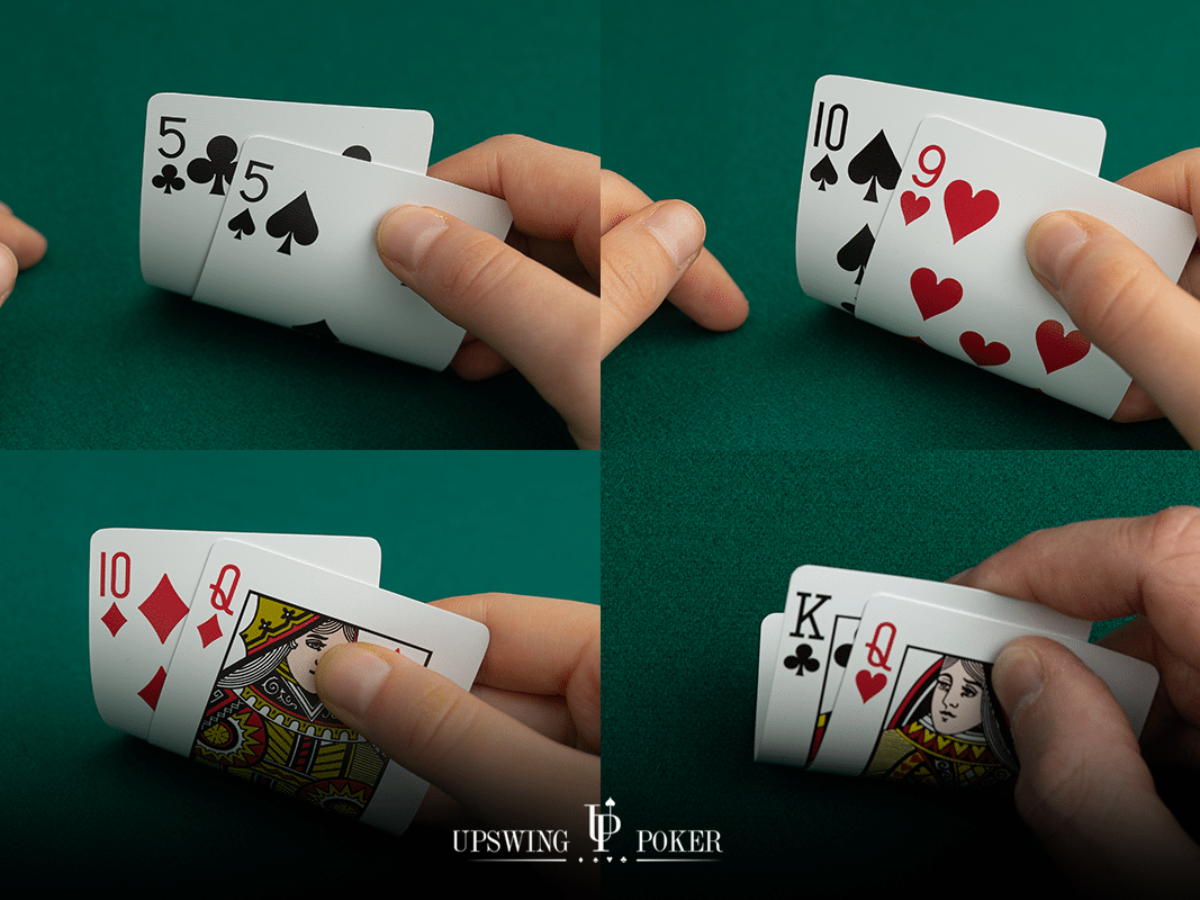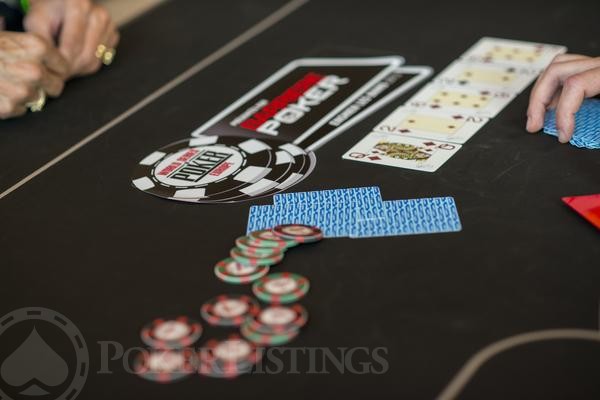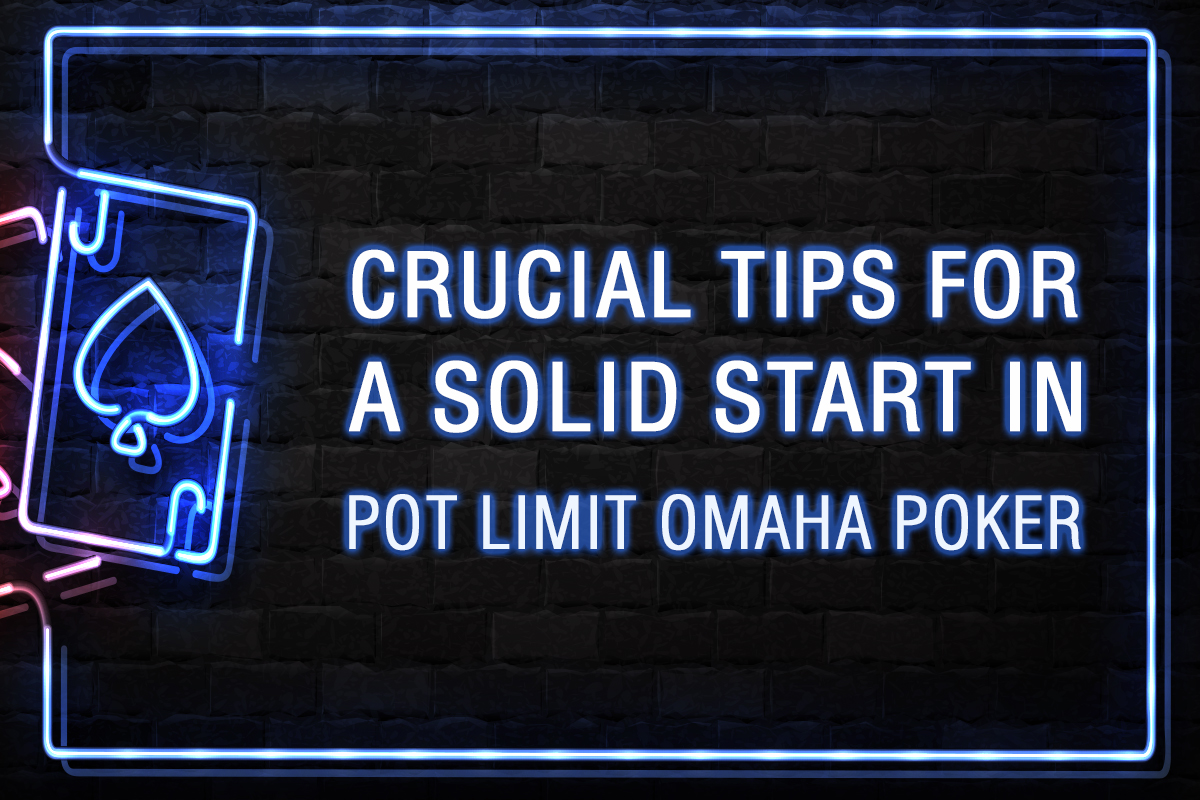Starting Money In A Poker Pot
Posted : admin On 4/14/2022- Starting Money In A Poker Potion
- Starting Money In A Poker Potter County
- Poker Pot Start
- Starting Money In A Poker Potential
- Poker Pot Starter
- Starting Money In A Poker Potentially
- Starting Money In A Poker Pot
Money to start the poker pot. September 25, 2020. On our website you will find all the today’s answers to Daily POP Crosswords. Daily POP Crosswords features the best pop-culture-themed puzzles from the top puzzle constructors, including many from Dell Magazines and Penny Press, the #1 crossword-puzzle-magazine publisher. A side pot is created from any additional money bet by the remaining players. There can be many side pots if there are more than one all-in player. An all-in player is only eligible to win a pot to which he has contributed. Sit-and-Go A poker tournament that starts whenever. Starting money in a poker pot. Let's find possible answers to 'Starting money in a poker pot' crossword clue. First of all, we will look for a few extra hints for this entry: Starting money in a poker pot. Finally, we will solve this crossword puzzle clue and get the correct word.
- Calculating Poker Odds for Dummies - A FREE, #1 guide to mastering odds. How to quickly count outs to judge the value & chance of winning a hand in 2021.
- Please find below the Starting pot for poker answer and solution which is part of Daily Themed Crossword March 27 2020 Answers.Many other players have had difficulties with Starting pot for poker that is why we have decided to share not only this crossword clue but all the Daily Themed Crossword Answers every single day. In case something is wrong or missing kindly let us know by leaving a.
Today I’m continuing my occasional series of columns on strategies for playing poker under various casino promotions. Let’s talk about “splash pots.”
Starting Money In A Poker Potion
As with most poker room promotions, there’s a lot of variability in the details of how splash pots run. But generally, at either arbitrary or predefined times, the poker room supervisor will select a table at random. Before the next hand begins, he puts some amount of money in the middle of the table, which will be awarded to the winner of the hand.
This kind of promotion will only be found in poker rooms that cater primarily to tourists playing low stakes. In Las Vegas, you might find it at the Flamingo, but not across the intersection at the Bellagio.
Correct strategy for a known amount of bonus — usually in the form of chips rather than cash, to encourage you to keep it in play if you win — is straightforward. You simply add that amount to the pot in order to determine whether your hand is worth playing. In mathematical terms, it makes no difference whatsoever whether the money is in the pot because you put it there, because the other players put it there, or because the casino put it there.
To take the obvious extremes, if the jackpot were $1, it wouldn’t affect your strategy at all, but if it were $1 million, it would be worth going all-in preflop with any two cards. With the worst hold’em starting hand, -offsuit, you would have about 5% equity at a 10-handed table. But even if you had a stack worth $1,000, it would be a bargain to risk all of it for a 5% shot at $1 million.
But don’t rush to buy your Vegas plane ticket just yet — nobody’s offering a million bucks in a splash pot. That’s just a hypothetical to help make clear why the amount of the bonus matters. (Although with PokerStars’ $1 million Spin & Go promotion, the hypothetical has been made actual on a few occasions.)
There’s a hitch to this beautiful simplicity, however. At least as often as you’ll find splash pots with fixed, known amounts, you’ll find mystery amounts. The supervisor places onto the table not a small stack of chips, but an envelope. Inside is a slip of paper with an amount written on it, to be disclosed only after the pot and the bonus have been won.
They will probably announce the possible range of jackpots — e.g., from $25 to $1,000. If you’re lucky, there will be some sort of board on which the amounts already won have been crossed off, so that you can get a feel for the range and distribution of those that are left.
Suppose, for example, that the promotion started with 100 envelopes, but now just ten are left. The board shows that eight contain $25, one contains $100, and one contains $500. Now how much is a randomly selected envelope worth?
This is easy if you have a calculator. If you have to do it in your head in the few seconds that you’ll have before the hand starts — not so much, especially if the number remaining is large. The expected value of the jackpot is just the sum of bonuses divided by the number left to be distributed: in this case, $200 + $100 + $500 / 10 = $80. Correct decision-making for this hand, then, requires you mentally to add $80 to whatever the players put into the pot in order to decide how much it’s worth risking to win.
If you have no information other than the possible range, you can safely assume that the great majority of envelopes will contain the lowest amount. I’d probably double that to account for the chance of winning one of the bigger amounts. But frankly, it’s all groping in the dark in that kind of situation.
But wait... there’s more!

Of one thing you can be quite sure: most of the other players will not value the bonus rationally and mathematically, and that is true whether the amount is known or unknown. In my experience, most players overvalue it, probably because it seems like “free” money. Of course, that’s just an illusion. First, the money isn’t from the casino’s generosity; it comes from an extra rake dedicated to promotions. Second, it’s no more valuable than the equivalent amount coming from other players.
But recreational poker players are not known for making their strategic decisions based on cold, hard facts. Emotions tend to rule the day. So even a measly $50 tossed onto the table before a hand starts can start a cascade of players shoving all-in preflop. After the first couple of people do so, the others start thinking that now the pot is so big they have to take their shot at it, too. Think of sharks in a feeding frenzy.
Conversely, I’ve been at a table where everybody seemingly ignored the bonus. This particular splash pot was triggered by a touchdown in a football game being shown on the big-screen TV. The poker room manager drew a card with my table number on it, and brought a stack of 20 $5 chips — $100 — to the table to start the next hand. It was a $1/$2 no-limit hold’em game. Nobody raised. I was in the big blind and was stunned when action got to me with a bunch of limpers, but no raise.
Think about it: $103 in the pot to start with, and not one person thought it was worth risking more than $2 to win. I believe that what happened is that these players did not think of the pot as being $103. Instead, they thought of it as the usual $3 to start, plus what the limpers contributed, with a special bonus going to the winner of the hand. That is, there was the pot, and there was the jackpot, with no relationship between the two.
As I hope is apparent, that is flat-out wrong.
(How the hand played out isn’t relevant to my basic point here. But I checked my option, then bet a mere $10 when I flopped top pair, and everybody folded. It was nutty.)

Don’t be like the people who go crazy over a modest bonus. And don’t be like the people who took no apparent notice of a bonus that was substantially larger than the average pot in the game. But do be prepared for a bunch of players at your table to be playing incorrectly because they don’t know how to adjust their strategy to account for the jackpot.
Play it right, get a little bit lucky, and you may win that bonus, plus the stacks of two or three other players at the same time.
Robert Woolley lives in Asheville, NC. He spent several years in Las Vegas and chronicled his life in poker on the “Poker Grump” blog.
Want to stay atop all the latest in the poker world? If so, make sure to get PokerNews updates on your social media outlets. Follow us on Twitter and find us on both Facebook and Google+!
Tags
cash game strategypromotionslive pokercasinossplash pot promotionspoker mathno-limit hold’emRelated Room
Full Tilt
The very first thing the aspiring 6-max cash game player should do is learn what range to open-raise the pot with from each position. Learning charts, however, is an exercise in memorisation and this alone will not suffice to build a solid foundation. In this introductory lesson on 6-max cash games, we shall we defining not just what hands to raise pre-flop, but why to do so from each position on the table.
By ‘opening’ we mean raising as the first player to enter the pot other than the blinds. Dealing with one or more limpers will be discussed at a later point in this course.
The 6-Max Table
Let’s begin by getting more acquainted with each position on a 6-max table.
As you can see, the positions are separated into three types. First, we have the non-steal positions in blue where our opening range will be more restrained given the larger amount of players to act, and therefore, the higher the chance of running into a big hand, getting called, and getting 3-bet.
The red positions are ‘steal’ positions. This does not entail that we never have a strong hand when we open from these seats, but the profitability of many of the hands we open in these seats relies at least partially on sometimes making our opponents fold pre-flop. For example, opening 86s from the CO (Cut-Off), which I generally recommend, would not be a profitable play if we always got called or raised by at least one opponent.
The position in black is the BB (Big Blind). We shall not be discussing this seat today, for the simple reason that it is impossible to open the pot from the BB. If everyone folds to us, we take down the pot, which is nice, but does not generate much strategic interest. Later on in the course, we shall explore how to defend our big blind against opens from other players.
For now though, let us explore the reasons to open a pot. Only then we can start to understand how to build an opening range in a whole array of dynamic situations and that is a lot more interesting and profitable than just following a chart.
Reasons to Open the Pot
1. Value
Occasionally, we are fortunate enough to be dealt powerhouse hands such as AKo or QQ. These hands have very high equity, meaning that they win at showdown more than the vast majority of other hands, and therefore entitle us to a large average amount of the pot that we have built. The bigger the pot that we win, the more money we make. 70% of a large pot is a whole lot better than 70% of a small one.
We raise from all positions on the table with big hands for value, but the criteria for making a value raise becomes less strict as we move towards the BU (button). This is because our opponents will call us with wider ranges as our incentive to steal the pot grows. Therefore, while KJo would be a skeptical hand to build a big pot with from UTG, it makes a fine value-raise from the BU because the BB will be forced to call hands like K9o and K5s to protect himself from us stealing profitably with any two cards. There is no set group of starting hands that we should always open for value, instead, we should think of a value open as raising a hand that will continue to be in good shape after that raise gets called.
2. Thinning the Field
Our equity is the amount of the time that we win the pot at showdown. Equity is much like a cake. The more people we have to share it with, the smaller the slice we get.
Starting Money In A Poker Potter County
One of our most common aims when we open raise is to force out some of our competitors so that we can have a larger slice of a larger cake. Take QQ from UTG, for example. This big pair has a massive 77% equity against a range that might call our open on the BU, which we could picture as something like: [55-JJ, ATs-AQs, KJs-KQs, QJs, JTs, T9s, 98s, 87s, AQo]. If we merely limped instead of raising, we would attract a smaller average pot with a larger average number of opponents. If we add another two opponents’ calling ranges to the equation, identical to the one above, then we are playing 4-handed and our 77% equity plummets to 49%. So what it really boils down to is: do you want 77%of a big pot or 49% of a small one? Thinning the field is essential in the pursuit of maximising earnings from big hands.

Winning more at showdown, however, is not the only benefit to thinning the field. Seeing a flop with fewer opponents will also help us get everyone else to fold before the river those times we do not flop so well and are relying on fold equity (winning the pot some amount of the time by making people fold). Imagine that we open JTs in the HJ (Hi-Jack), and in the process, manage to thin the field to just one opponent: the BB. On the flop of 742r, we make a small bet and the BB folds. Clearly, this fine result of winning by betting Jack-High would have happened a lot less often had we been in a four-way pot. By thinning the field pre-flop, we created a situation, in which even if we missed the board, we would have ways to win the pot a reasonable amount of the time.
3. Stealing Blinds
A more extreme form of thinning the field occurs when we thin it to such an extent that we are the only player remaining. At this point, we win the blinds, which are nothing special in the short-term, but allow us to keep our win-rate healthy in the long run. By winning very small pots very often, we keep ourselves from being eaten alive by the blinds and gain a drip of essential poker nutrients. In 6-max cash games, where the blinds come around far more frequently than in full-ring, and where we find ourselves in a steal position much more frequently, having a wide opening range is essential.
Mathematically, the EV of stealing with a hand like K6s on the BU (button) is very much in our favour. If we open for 2.5bb we are risking 2.5 to win 1.5. Even if we were to fold our cards on the flop every time we got called (a horrendous strategy), our steal would still only need to work 2.5 /(2.5 + 1.5) = 62.5% of the time to break even.
Most players will rightly play tight from the small blind where it is dangerous to call with too wide of a range with the worst position on the table and a player left to act behind. The small blind usually folds here 80% of the time or more. The big blind should defend a lot more often given that his pot odds are better and because is closing the action. He might only fold around 60% of the time here. This means our steal will work 0.6 x 0.8 = 48% of the time – not far from our target fold equity for breaking even under the ludicrous assumption that we were planning on folding every flop.
Now, because our actual flop strategy is far better than folding every flop and involves selectively continuation-betting, value betting good hands, and semi-bluffing draws, we will need far less than 62.5% fold equity, and less than 48%. Stealing with a hand as playable as K6s will be very profitable on an average table.
Conclusion (Default Opening Ranges)
Poker Pot Start
The following ranges are to be used as a rough guide only. Different tables will call for different opening ranges from each seat, but here is a solid default approach for an average table, which is neither especially loose nor especially tight. Perhaps at such a table, on average, there would be three solid regulars, one tighter player and one looser recreational player.
Please feel free to deviate from these ranges by stealing wider from the SB vs. an opponent who under-defends their blinds, raising more hands for value from UTG where the BB is too loose, and in many more spots that call for some kind of exploitative strategy.
Starting Money In A Poker Potential
Under the Gun Position
High-Jack Position
Cut-Off Position
Poker Pot Starter
Button Position
Small-Blind Position
Starting Money In A Poker Potentially
Join us on our Discord channel.
Starting Money In A Poker Pot
Test your knowledge with our short quiz below